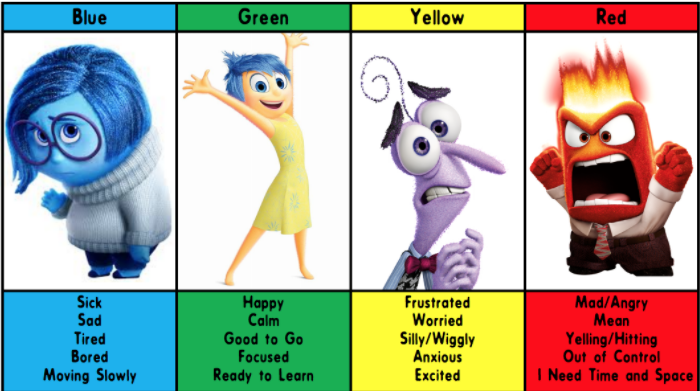Zones of Regulation and Winter Wellbeing
“LIFE IS 10% WHAT HAPPENS TO US AND 90% HOW WE REACT TO IT”
? -CHARLES SWINDOLL
Zones of Regulation is a social curriculum designed to support children to:
- identify their feelings and levels of alertness
- use effective regulation tools
- know when and how to use tools
- problem solve positive solutions
- understand how their behaviours
- influence others’ thoughts and feelings (theory of mind)
Children will feel anxiety, frustration and sadness in their lives and they need to recognise these emotions in order to know when they are happy.
Zones of Regulation uses four colours to help children understand their emotions self-identify how they’re feeling.

The Green Zone
The green zone is used to describe when you are calm.
Being in the green zone means you are focused, happy, or ready to learn. This is predominantly the state you want your child to be in.
It’s also the state most needed in the classroom in order to learn.
The Yellow Zone
The yellow zone describes when you have a heightened sense of alertness. This isn’t always a bad thing, and you typically still have some control when you’re in the yellow zone.
Being in the yellow means you may feel frustrated, anxious or nervous. But, it could also mean you’re feeling excited, silly, or hyper – which is okay in the right situations.
The Red Zone
The red zone describes an extremely heightened state of intense emotions. When a person reaches the red zone, they’re no longer about to control their emotions or reactions.
Being in the red zone means you’re feeling anger, rage, terror, or complete devastation and feel out of control.
The Blue Zone
The blue zone, on the other hand, is used when a person is feeling low states of alertness or arousal.
When you’re in the blue zone you may be feeling down – sad, sick, tired, or bored. You’re still in control, as you are in the yellow zone, but with low energy emotions.
How to Help.
Here are some ways that you can carry on supporting your child at home using the ‘Zones of Regulation’
- Use the ‘zones’ visual when talking about feelings and emotions
2 Ask your child throughout the day, “What zone are you in?”, “How do you feel?”, “Why are you in the ______ zone?”
- Model how you are feeling to them, for example, “I am feeling (yellow zone) because you’re not helping me to tidy up.”
More ideas and resources are available on the Links to Useful Websites pages
Winter Wellbeing Week 1 -Take Notice
In class, we have been learning more about the Zones of Regulation and NOTICING what sort of situations trigger us and how we react in different scenarios.
We can often think negatively about a situation that has happened or is about to happen. When we think negatively, we are likely to carry on thinking negatively, which helps to make the thoughts more powerful. We are practicing ways to challenge these negative thoughts and think about the situation in a more positive way.
Take a look at the Winter Wellbeing activities we have completed in school
zones winter wellbeing website.pdf

